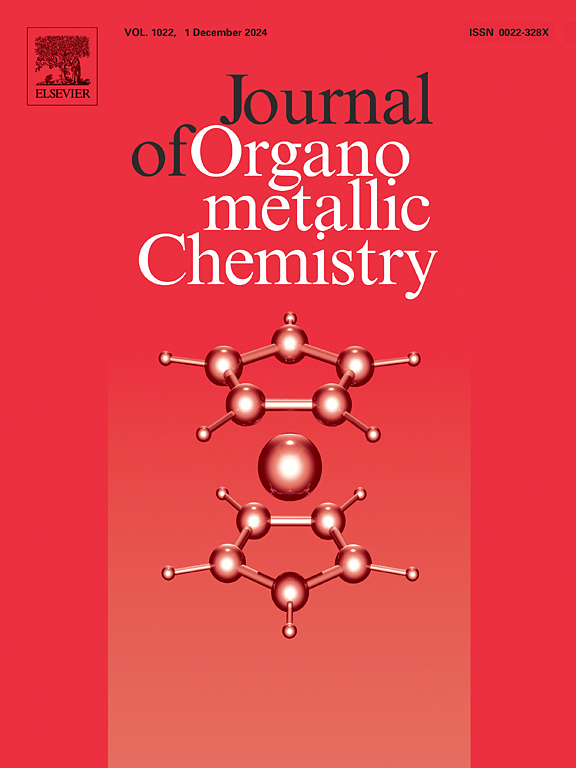综述了磁性纳米银催化剂在硝酸芳烃还原中的应用
IF 2.1
3区 化学
Q3 CHEMISTRY, INORGANIC & NUCLEAR
引用次数: 0
摘要
将硝基芳烃还原为芳香胺是合成胺类产品的有力的有机合成和工业化学手段。近年来,磁铁矿纳米催化剂已成为传统贵金属催化剂的一种有前途的环保替代品。由于其显著的表面积、优异的催化活性和固有的磁性,磁铁矿纳米颗粒易于分离和可回收,从而显著提高了该过程的可持续性。银纳米颗粒(AgNPs)作为催化剂,显著提高了这种转化的速率和选择性。使用温和的还原剂,如NaBH4或H2,结合这些多功能纳米催化剂,有助于在温和的条件下快速和选择性地转化硝基芳烃。本文综述了磁性银纳米催化剂作为一种具有成本效益、可重复使用和环保的材料用于催化硝基芳烃还原的潜力,为绿色化学合成提供了一条有希望的途径。本文综述了2020年至2025年磁性纳米银催化剂的制备及其在硝基化合物加氢反应中的应用。本文章由计算机程序翻译,如有差异,请以英文原文为准。

A review of the recent application of magnetic silver nanocatalysts as an easily retrievable catalyst in nitroarene reduction
Reducing nitroarenes to aromatic amines is a powerful synthetic organic and industrial chemistry tool to synthesize amine products. In recent years, magnetite nanocatalysts have emerged as a promising and environmentally benign alternative to traditional noble metal catalysts in this reaction. Due to their significant surface area, excellent catalytic activity, and intrinsic magnetic properties, Magnetite nanoparticles facilitate facile separation and recyclability, thereby significantly enhancing the sustainability of the process. Silver nanoparticles (AgNPs) serve as catalysts that significantly improve the rate and selectivity of this transformation. The use of mild reducing agents, such as NaBH4 or H2, combined with these versatile nanocatalysts, facilitates the rapid and selective conversion of nitroarenes under mild conditions. This review highlights the potential of magnetic silver nanocatalysts as cost-effective, reusable, and eco-friendly materials for catalytic nitroarene reduction, offering a promising pathway for greener chemical synthesis. This review summarizes the preparation and applications of magnetic silver nanocatalysts as helpful and environmentally friendly catalysts for the hydrogenation of nitro compound reactions, covering the period from 2020 to 2025.
求助全文
通过发布文献求助,成功后即可免费获取论文全文。
去求助
来源期刊

Journal of Organometallic Chemistry
化学-无机化学与核化学
CiteScore
4.40
自引率
8.70%
发文量
221
审稿时长
36 days
期刊介绍:
The Journal of Organometallic Chemistry targets original papers dealing with theoretical aspects, structural chemistry, synthesis, physical and chemical properties (including reaction mechanisms), and practical applications of organometallic compounds.
Organometallic compounds are defined as compounds that contain metal - carbon bonds. The term metal includes all alkali and alkaline earth metals, all transition metals and the lanthanides and actinides in the Periodic Table. Metalloids including the elements in Group 13 and the heavier members of the Groups 14 - 16 are also included. The term chemistry includes syntheses, characterizations and reaction chemistry of all such compounds. Research reports based on use of organometallic complexes in bioorganometallic chemistry, medicine, material sciences, homogeneous catalysis and energy conversion are also welcome.
The scope of the journal has been enlarged to encompass important research on organometallic complexes in bioorganometallic chemistry and material sciences, and of heavier main group elements in organometallic chemistry. The journal also publishes review articles, short communications and notes.
 求助内容:
求助内容: 应助结果提醒方式:
应助结果提醒方式:


